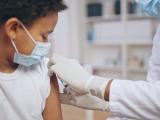A brief communication published last week in NPJ Primary Care Respiratory Medicine outlines the substantial economic burden of long COVID worldwide, estimating that persistent symptoms after COVID infection cost the global economy roughly $1 trillion each year, or roughly 1% of global gross domestic product.
The analysis looked at data across numerous studies and reports, analyzing long COVID’s impact on national economies, healthcare systems, labor markets, and quality of life.
Global prevalence estimates of long COVID vary widely. Conservative estimates suggest a range of 2% to 7%, while a systematic review of 144 studies published through 2024 suggests a prevalence of 36%, with higher rates reported in hospitalized patients, adults, and women.
Even using more conservative estimates, the economic footprint of long COVID is "material and persistent," write the authors. One economic model suggests $3.7 trillion in annual losses associated with long COVID, with 59% attributed to decreases in quality of life and the remaining losses attributed to reduced earnings and increased medical expenses.
In the United States alone, analyses suggest that long COVID may be responsible for $170 billion in annual lost wages, with some estimates ranging even higher.
Economic, social, and psychological impacts
Patients with long COVID often require more medical care, which comes at considerable personal expense. In a large study of 282,080 adults in the United Kingdom, annual median healthcare expenditures were £705 ($924), "substantially higher than observed in pre-long COVID (£294 [$385]), COVID-19 only (£447 [$586]), pre-pandemic (£306 [$401]), and contemporary non–COVID-19 (£350 [$459]) cohorts."
Many patients also incur out-of-pocket medical expenses for fully self-funded treatments and insurance copayments. Reduced work hours and prolonged unemployment can also add to families’ economic hardship. Women, lower-income workers, and people without health insurance are hit even harder.
Intangible impacts such as reduced social participation, psychological distress, and diminished quality of life are harder to quantify but no less real. "These impacts represent a profound impact on societal well-being," write the authors.
Emerging evidence suggests that the economic implications of long COVID are profound and multifaceted.
The paper highlights emerging evidence that COVID-19 vaccination substantially reduces the prevalence of long COVID, lowering risk by approximately 21% in US adults and 16% globally—an important consideration for strategies aimed at minimizing long-term economic fallout.
"Emerging evidence suggests that the economic implications of long COVID are profound and multifaceted, necessitating a comprehensive understanding to inform global policy and resource allocation," the authors conclude.
Understanding full economic burden requires more research
The authors highlight the lack of standardized case definitions, evidence-based biomarkers, and reporting mechanisms for long COVID as factors that hinder accurate data collection about the economic impacts of long COVID.
Despite increased awareness, understanding the economic burden of long COVID will require more research, write the authors, citing a need for comprehensive longitudinal studies to track the economic impact on individuals and healthcare systems over time, more longer-term cohort studies (most existing studies are cross-sectional or short-to-medium term), and more granular analyses to better understand the burden associated with different long COVID phenotypes (observable characteristics) and symptom clusters.
In the meantime, the authors advocate learning from other chronic conditions and post-viral syndromes. "The economic modelling and management strategies for other chronic post-viral syndromes or debilitating conditions (e.g., ME/CFS [myalgic encephalomyelitis and chronic fatigue syndrome] can provide valuable insights for projecting and mitigating the long-term economic burden of long COVID."






















